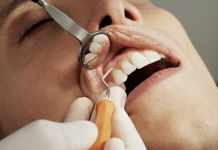Getting dental implants is a big step towards getting back that beautiful smile. It allows you to do your daily activities such as eating and talking without having to worry about the appearance of your teeth.
Dental implants are like screws that act as tooth roots. The attachment in your jawbone fuses with your natural bone eventually. Nowadays, more patients use zirconia implants for the benefits they offer.
Why Use Zirconia Implants?
With increased awareness of holistic well-being, patients choose implants that do not contain any metal. It is a crystal form of the transitional metal Zirconium and marketed as metal-free. It assures the patients that there will be no presence of metals in their gums.
These implants also have a more natural color. No one would notice that you had your tooth replaced. It is a more aesthetically viable choice than titanium implants.
How To Take Care of Your Zirconia Implants?
Maintain that confident smile by caring for your zirconia implants. Having a cleaning regimen for implants is as important as caring for your natural teeth. Both teeth depend on surrounding tissue for support. They need to be free from infection caused by plaque or bacterial biofilm. Failure to clean thoroughly may lead to severe damage to the gum tissue and cause periodontal diseases.
Here are dentist-approved ways of caring for your implants that you can do at home.
- Brush twice daily using a soft-bristled toothbrush. Also, use a non-abrasive toothpaste. The American Dental Association determines a toothpaste’s Relative Dentin Abrasion or RDA value. The lower the value, the less abrasive it is.
- Floss daily. Use an implant-specific floss to protect the surrounding tissue. Insert the floss on both sides of the implant. Wrap it in a circle and move in a shoe-shine motion focusing on the implant’s crevice.
- Gargle with an antimicrobial mouthwash. This practice is especially important if you suspect an infection. Dentists recommend this to patients with problems in dexterity or whose implants are in hard-to-reach areas.
- Use water-flossers. Water-flossers reduce the formation of plaque or biofilm. Make sure to choose a water-flosser that has a nonmetal or rubber tip once or twice daily. If there is already inflammation, add a diluted non-alcohol antimicrobial rinse such as chlorine dioxide or chlorhexidinegluconate.
- Use a stimulator. Place the rubber-tip simulator on the gum tissue. Make sure that it lays flat and not poking on the gums. Roll and massage the surrounding tissue to stimulate blood flow. You will know if the correct pressure is applied when the tissue changes into a lighter color.
These tips are easy to do at home, and you can incorporate them into your daily hygiene. If you do it consistently, there will be fewer chances of having an infection or inflammation.
If you observe that there are signs of inflammation such as pain and a change in your gum’s color, immediately schedule an appointment with your dental hygienist. He will also recommend tools and dental products that are appropriate for your implants.
















